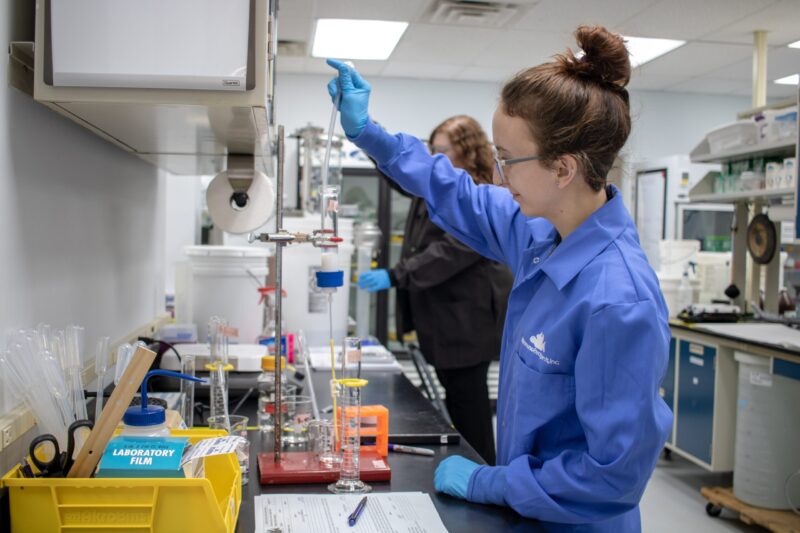
Members enjoy exclusive opportunities - from advocating for policies that spur innovation to receiving discounts on BIO events and through BIO’s own cost-saving program. Unlock the possibilities and join us today.


Become an advocate for biotechnology and help shape policy that promotes innovation! Contact policymakers directly through BIO’s easy-to-use tool and have your voice heard.

BIO Early-Stage Resources Hub
BIO launched a powerful tool with exclusive resources to help early-stage and startup biotechs save money and stay up to date on the latest insights.

BIO Webinars
BIO’s free educational webinars cover topics ranging from policy to capital raising to member services—anywhere, anytime from your own device.

Price controls on the U.S. Biopharma Ecosystem
New research by Vital Transformation: Inflation Reduction Act hampers R&D across therapeutic areas.

The Biotechnology Economic Impact Map
Biotech’s Economic Impact. Go inside the BIO member companies driving the bioeconomy nationwide.

BioSafe
Since 2003, BioSafe, BIO's preclinical safety committee, has been driving innovation in biopharmaceuticals by addressing key regulatory and scientific issues.

Nature's Building Blocks
Explore inspiring videos about how biotech is solving our world’s biggest sustainability, health, and equity challenges, produced in partnership with BBC StoryWorks.

BIO Early-Stage Resources Hub
BIO launched a powerful tool with exclusive resources to help early-stage and startup biotechs save money and stay up to date on the latest insights.

BIO Webinars
BIO’s free educational webinars cover topics ranging from policy to capital raising to member services—anywhere, anytime from your own device.

Price controls on the U.S. Biopharma Ecosystem
New research by Vital Transformation: Inflation Reduction Act hampers R&D across therapeutic areas.

The Biotechnology Economic Impact Map
Biotech’s Economic Impact. Go inside the BIO member companies driving the bioeconomy nationwide.

BioSafe
Since 2003, BioSafe, BIO's preclinical safety committee, has been driving innovation in biopharmaceuticals by addressing key regulatory and scientific issues.

Nature's Building Blocks
Explore inspiring videos about how biotech is solving our world’s biggest sustainability, health, and equity challenges, produced in partnership with BBC StoryWorks.

BIO Early-Stage Resources Hub
BIO launched a powerful tool with exclusive resources to help early-stage and startup biotechs save money and stay up to date on the latest insights.

BIO Webinars
BIO’s free educational webinars cover topics ranging from policy to capital raising to member services—anywhere, anytime from your own device.

Price controls on the U.S. Biopharma Ecosystem
New research by Vital Transformation: Inflation Reduction Act hampers R&D across therapeutic areas.

The Biotechnology Economic Impact Map
Biotech’s Economic Impact. Go inside the BIO member companies driving the bioeconomy nationwide.
January 12-15, 2026 | San Francisco, CA
March 2-3, 2026 | Miami, FL

BIO’s committees have given us a chance to be involved with other leaders on the cutting edge of biotech. We share a common goal to advance science and technology in the bioeconomy.

BIO’s strategic advocacy and unwavering leadership in the areas of renewable fuels and industrial products are helping to shape and drive the conversation in Washington and in state capitals across the nation.

We are proud to work with BIO to foster transformational medical innovation to improve the health of all those living with devastating diseases around the world.

If you're an Early-Stage company like we are at Nkarta my dues get paid for by the BIO Business Solution savings...to me, it's a very easy decision to be a part of BIO.

BIO’s committees have given us a chance to be involved with other leaders on the cutting edge of biotech. We share a common goal to advance science and technology in the bioeconomy.

BIO’s strategic advocacy and unwavering leadership in the areas of renewable fuels and industrial products are helping to shape and drive the conversation in Washington and in state capitals across the nation.

We are proud to work with BIO to foster transformational medical innovation to improve the health of all those living with devastating diseases around the world.

If you're an Early-Stage company like we are at Nkarta my dues get paid for by the BIO Business Solution savings...to me, it's a very easy decision to be a part of BIO.

BIO’s committees have given us a chance to be involved with other leaders on the cutting edge of biotech. We share a common goal to advance science and technology in the bioeconomy.



BIO is the premier biotechnology advocacy organization representing biotech companies, industry leaders, and state biotech associations in the United States and more than 35 countries around the globe. BIO members range from biotech start-ups to some of the world’s largest biopharmaceutical companies – all united by the same goal: to develop medical and scientific breakthroughs that prevent and fight disease, restore health, and improve patients’ lives. BIO also organizes the BIO International Convention and a series of annual conferences that drive partnerships, investment, and progress within the sector. Learn more at bio.org.












